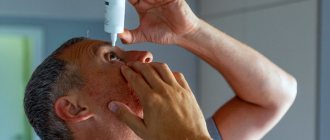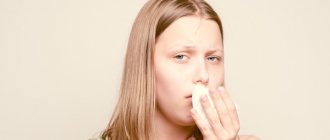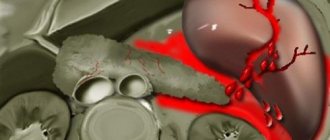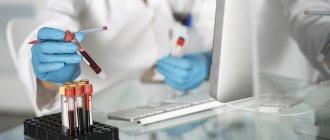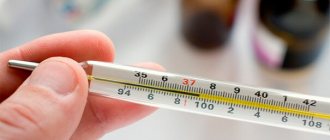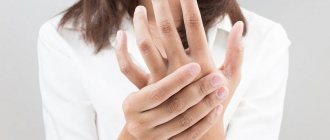November 20, 2015
Skin diseases are quite common in modern times - poor environment, stress and poor lifestyle also affect the health of the skin. However, many manifestations on the skin may not be so much an independent disease as a consequence of diseases of the internal organs. Each specific case requires an integrated approach to identify the root cause. Therefore, such branches of medicine as dermatology, dermatovenereology and general therapy work together.
Medical offers consultations with highly qualified dermatologists who will definitely help you cope with the disease and, if necessary, prescribe complex treatment together with other specialists.
What symptoms should you see a doctor urgently?
People often resort to self-diagnosis of diseases when identifying changes in the skin. The Internet is replete with articles detailing the symptoms and treatment of diseases. But there are many dangerous symptoms, if detected, you should immediately contact a specialist.
1. Rash
. The rash is a symptom of many diseases, both skin and related to other organs. Rashes can be a symptom of an allergic reaction, stress, gastrointestinal pathology, and even cancer. If the rash is brightly colored and does not go away for more than 48 hours, do not delay visiting a specialist.
2. Warts
. The appearance of warts on the skin is caused by various strains of the human papillomavirus. The virus is transmitted from person to person, so if you find papillomas or condylomas on any part of the body, you should make an appointment with a dermatologist or dermatovenerologist.
3. Peeling
. A seemingly harmless symptom can serve as a signal of a dangerous disease. If peeling skin is accompanied by prolonged itching, redness and severe dryness, it is better to consult a doctor for an accurate diagnosis and treatment. If peeling has become the skin’s response to exposure to frost, sun or wind, then we recommend that you protect your skin more carefully and use special creams.
4. Change in skin color
. A change in skin color after tanning or peeling is quite understandable, but if you find suddenly appearing spots on your body or face, this is a reason to make an appointment with a doctor. Red spots can signal an acute allergic reaction or gastrointestinal diseases, yellowing of the skin is one of the symptoms of hepatitis B and C, dark spots can indicate necrotic processes.
Acne disease (acne treatment)
Acne (Acne vulgaris), syn. Juvenile acne is a chronic, often recurrent disease characterized by purulent inflammation of the sebaceous glands.
Acne occurs as a result of an imbalance of androgens in the body and, as a result, increased sebum secretion. The ducts of the sebaceous glands become clogged with sebum, and comedones (blackheads) appear. The sebum that has stagnated in the blocked ducts begins to decompose, forming a favorable nutrient medium for pathogenic microflora, mainly coccus, corynebacteria, and propionbacteria.
More often, this dermatological disease occurs at the age of 15-18 years, which is usually associated with puberty, but can occur at any age during exposure to unfavorable factors. The occurrence of acne is facilitated by hereditary predisposition, dysfunction of the endocrine glands, dysfunction of the digestive system, hypovitaminosis, poor nutrition (excessive consumption of food high in fats and carbohydrates). The main clinical manifestation is the appearance of comedones and papulopustular rashes on the skin. Typically, an inflammatory process develops around the comedone: the comedone transforms into a conical papule of bright red or blue-red color. A small pustule may appear in the center of such a papule - then they speak of papulopustular acne.
The inflammatory process is characterized by varying depths, and therefore there are indurative acne, which is extensive infiltrates with an uneven surface, and phlegmonous acne, in which the inflammatory process affects the deep layers of the skin and develops slowly and for a long time. In some cases, acne tends to merge.
Particularly distinguished is necrotic acne, in which necrosis of tissue cells develops deep in the follicle. Presumably, its development is streptococcal in nature. Most often it occurs in men aged 30-50 years, is localized on the skin of the forehead and temples and is a pustule with hemorrhagic contents. After the disappearance of such acne, scars remain on the skin.
Acne keloid is a distinct type of acne that occurs predominantly in men aged 20-40 years. They are usually located in the back of the head and on the back of the neck. The skin around them is sharply compacted, hair in such areas grows in tufts. They leave behind keloid scars.
TOP 5 skin diseases
Skin diseases are quite common and can appear at any age. They cause physical discomfort to a person, force them to hide the affected areas under thick clothing or use cosmetics to hide imperfections.
Fortunately, modern dermatology successfully fights skin diseases. And here are the 5 most common of them.
1. Acne.
Acne, or acne, is an inflammatory skin disease that occurs as a result of blockage of the sebaceous glands. More than 80% of the world's population is prone to acne, most of them are teenagers. The disease begins with the appearance of acne, blackheads and papules (inflammatory nodules). If you are the parent of a teenager with acne, bring him to see a doctor in order to treat the disease in time and prevent its complications, or come yourself if you suddenly encounter the disease as an adult.
2. Atopic dermatitis.
Another inflammatory skin disease is atopic dermatitis. The disease is especially common among children (10–15% in developed countries). The disease is accompanied by redness of the top layer of skin, dryness and severe itching. A complete cure of the patient is impossible, but to mitigate the course of the disease, moisturizing medicinal ointments and local immunomodulators are used. Ignoring the disease can lead to serious complications and the development of skin infections.
3. Psoriasis.
Another common disease (about 5% in developed countries) is psoriasis. This is a chronic inflammatory non-infectious disease, which is characterized by the appearance of bright pink or red plaques on different parts of the body and head. In addition, there is severe burning and itching, dry skin. If left untreated, the risk of stroke increases and internal organs such as the liver and kidneys are also affected.
4. Herpes simplex.
One of the most common viral skin diseases. Antibodies to this virus are found in 90% of people. The main symptom of herpes is blisters filled with liquid that appear in the mucous membranes, most often the lips or nose. Lack of treatment can provoke a decrease in immunity and, as a result, an increased risk of acquiring new diseases.
5. Viral warts.
A common viral skin disease caused by the papilloma virus entering human skin cells. The virus is often transmitted through everyday contact (shaking hands, using objects of the carrier) or sexually. Convex nodules called warts form at the site of virus penetration. The danger of the disease is that the virus has oncogenic strains that can lead to the development of cancer.
Fortunately, there are few such strains, but it is worth checking to eliminate risks. This is especially true for women, because HPV is the first and most important cause of cervical cancer.
Types of fungal skin diseases
Mycoses (mycosis, singular, Greek mykes mushroom; synonym fungal diseases) are a large group of skin diseases caused by pathogenic fungi.
Classification of mycoses is carried out according to various signs of diseases: by the genus and type of fungi, the depth of their penetration into the affected tissues, and their preferential localization. The following types of fungal skin diseases are distinguished:
1. Keratomycosis (for example, pityriasis versicolor). Keratomycosis refers to fungal skin diseases in which the fungus affects only the stratum corneum of the epidermis and does not cause an inflammatory reaction of the skin.
2. Dermatophytosis. These include epidermatophytosis inguinalis, epidermatophytosis of the feet, rubrophytosis, trichophytosis, microsporia, favus.
3. Candidiasis is a disease of the skin, mucous membranes and internal organs caused by fungi of the genus Candida. Candida fungi are considered opportunistic microorganisms, as they are widely distributed in the external environment. The optimal temperature for their growth is 21-27 degrees, but they can grow at a temperature of 37 degrees. The depth of penetration of fungi into the affected tissue is different and depends on the location of the disease: for example, when affecting the vaginal epithelium, fungi penetrate into all its layers, including the basal one, and in the oral cavity they affect only superficial epithelial cells.
4. Deep mycoses, including North American and keloid blastomycosis, sporotrichosis, chromomycosis. This group of diseases is mainly common in the countries of South America, Africa, and the USA. Infection occurs due to skin injuries, scratches, cracks. The clinical picture is different: tubercles and nodes appear on the skin, prone to decay with the formation of ulcers. They can affect the deep layers of the skin, subcutaneous tissue, underlying muscles and even bones and internal organs. This causes severe general symptoms, which do not exclude death.
5. Pseudomycoses are classified into a separate group: erythrasma, actinomycosis. Initially, these diseases were classified as fungal, but a more detailed study of their pathogens made it possible to classify them as microorganisms that occupy an intermediate position between fungi and bacteria.
How to treat skin diseases
Unfortunately, there is no one universal remedy for treating skin diseases. After diagnosis, the doctor prescribes treatment that is appropriate in your case. It can be:
- Healing ointments and balms (healing, anti-inflammatory, hormonal, antibacterial)
- Oral medications (antibiotics, hormonal agents, immunomodulators)
- Physiotherapy (laser, magnetic therapy)
- Cosmetic procedures (cleansing, peeling, moisturizing masks)
- Cosmeceuticals (lotions, tonics, creams, masks)
Should you prescribe treatment yourself? Everyone decides for themselves. But we still want to warn you. Of course, if you have gone a little overboard with tanning or have several inflammations on your face due to the approaching critical days, then you can do without a doctor. But when it comes to serious diseases - psoriasis, allergies, dermatitis - self-medication can lead to worsening symptoms.
Contact specialists who will help you choose effective treatment. In the “Health” network of clinics, appointments are conducted by dermatologists and dermatovenerologists. They will conduct an examination, prescribe the necessary tests and help cope with the disease.
We are waiting for you at any of our branches!
Types of allergic rashes
An allergic reaction occurs when any external or internal allergen enters the body. Usually expressed as rashes and itching. The human body makes every effort to neutralize the allergen. The blood vessels dilate, the skin becomes red and inflamed, and swelling appears. You must call an ambulance immediately.
Sometimes allergies occur in a milder form. The main types of allergic rashes:
- Hives. It can appear in the form of medium to large blisters. They sometimes merge with each other. The blisters are matte in color and have a pink border around the edges.
- Atopic dermatitis. The skin is itchy, dry and irritated. This is a reaction to plants, animals, certain types of food, perfumes and deodorants, household chemicals, creams and dust, and medications.
- Contact dermatitis. Blisters appear on the body, the skin turns red and itches. Rashes are localized where the allergen has entered, as a reaction to cosmetics, synthetic clothing, and medications.
- Eczema. It is most often localized on the hands and face. These are numerous pinpoint rashes with serous fluid. Causes severe itching. This may be due to stress, disruption of the endocrine system, metabolism, reaction to food, cosmetics, household chemicals.
There is also toxicoderma, neurodermatitis, Leyell's syndrome and so on. An experienced dermatologist or allergist will help determine the diagnosis and prescribe appropriate treatment.
Common symptoms and manipulations in dermatology:
- Skin rashes
- Calling a dermatologist to your home
- Itching in the urethra
- Itchy skin
- Skin rash
- Prevention of casual sex
- Skin neoplasms
- Pyoderma
- Pityriasis rosea
- Streptoderma
- Scabies
- Peeling skin
- Fungal infections
- Skin infection
- Pus on the skin
- Blisters on the skin
- Papillomas on the foreskin
- Sexually transmitted diseases
- Skin structure
Is it possible to completely cure bacterial dermatological diseases?
In most cases of bacterial skin diseases, treatment with antibiotics is effective and leads to complete recovery. However, in patients with compromised immune systems, such as those with diabetes, cancer, rheumatoid arthritis, or HIV infection, bacterial skin infections can be chronic or recurrent and pose a serious health problem, causing serious complications.
ONLINE REGISTRATION at the DIANA clinic
You can sign up by calling the toll-free phone number 8-800-707-15-60 or filling out the contact form. In this case, we will contact you ourselves.
Symptoms of psoriasis on the hands
The disease can begin and progress differently depending on the form. Symptoms of psoriasis on the hands can also vary.
Vulgar form
This is the most common form. On the hands, the skin of the extensor area of the joints, as well as the forearms, wrists, dorsum of the hands, and fingers are usually affected. In the area of the elbows, so-called standby plaques appear on both sides, which can remain in the same state for years without progressing. On the back of the hands, the disease progresses more often, since the skin in these areas is constantly exposed to various influences. Psoriasis often appears on the fingers. In case of damage to the little fingers and thumbs, the risk of injury to psoriatic elements increases.
The first signs of psoriasis on the hands are the appearance of one or more scaly spots, which quickly turn into papules with a raised inflammatory base. If you scratch the top of such a papule, a number of characteristic symptoms appear:
- type of stearin drop - multiple white flakes;
- if you scrape off all the scales, a transparent film will be visible;
- Slightly scraping the film leads to the appearance of droplets of blood on it.
These symptoms are the hallmark of a psoriatic rash. In the future, the primary symptoms of the disease may progress, with the papules increasing in size, merging with each other and forming large plaques, and new elements appear. Possible damage to nails. Over time, the progression stops, after which the recovery process begins: the rash slowly turns pale and disappears.
Exudative form
This form of the disease is less common. The skin on the back of the hands is usually affected. Often this type of psoriasis also affects the fingers. Characterized by the appearance of swelling, exudate on the surface of the rash elements, severe itching and a constant feeling of discomfort. As a result, the scales stick together to form grayish-yellowish crusts on the surface of the papules on the skin of the hands and fingers. In this case, peeling is not very noticeable, but the risk of bacterial infection increases. What exudative psoriasis looks like on the hands can be seen in the photo:
Palm shape
Psoriasis on the palms can occur in the form of plaque-fan-shaped, horny and pustular forms.
The plaque-fan-shaped form is characterized by the formation at the initial stage of rash elements in the form of scaly papules, merging into large plaques. The rashes are localized mainly on the palms and fingers. It often recurs and is difficult to treat. The reason for this is the constant exposure to various external factors. The skin between the fingers is affected. They turn red, swell, and become covered with cracks and scales. Often such rashes spread to the fingertips and nail plates.
The horny form is manifested by dry skin, thickening on the palms, the appearance of cracks and dry calluses.
Psoriasis on the palms of the hands may look like pustules. This is the so-called Barber pustular psoriasis. Purulent blisters appear on the surface of the palms, which can merge with each other, forming purulent lakes. The contents of the pustules are sterile. Photo:
Furunculosis
Most often, the development of one boil occurs quickly, and healing occurs within a few days. However, it should be remembered that in the case of boils in the facial area, especially around the orbit, nose, upper lip and auricles, due to the specific vascularization of these areas and the close proximity of important structures of the central nervous system within the skull, serious complications can occur.
Furunculosis is a condition in which many boils occur. Numerous changes tend to coalesce and form larger tumors. These symptoms often occur in malnourished people with underlying medical conditions such as cancer or diabetes.
Treatment of boils should be carried out by a dermatologist. For a single boil, topical antiseptics and astringents are usually sufficient. Multiple boils or clustered boils should be treated with systemic antibiotics. Fusion of purulent tumors requires surgical intervention.
Actinomycosis
The disease is caused by the bacterium Actinomyces israeli. This microorganism can live in the human mouth without causing disease. As a result of injury to the mucous membrane, the pathogen can penetrate deeper, causing actinomycosis. The development of the disease is predisposed by inflammation of the oral cavity accompanied by tooth decay, periapical infections of the teeth, and inflammation of the gum pockets. Skin changes occur on the face and neck.
Initially, they take the form of inflammatory tumors, which then disintegrate, forming fistulas, that is, channels that emerge from the surface of the skin. In purulent discharge from fistulas, characteristic yellowish grains are found. Skin changes may be accompanied by general symptoms such as fever and flu-like symptoms. Actinomycosis can also affect the internal organs of the chest and abdominal cavity.
Diagnosis and treatment of the disease requires the mandatory participation of a dermatologist, and sometimes a surgeon. For treatment, general antibiotic therapy is prescribed. Surgical treatment is used to empty pus reservoirs and remove fistulas.
How to eat healthy
Nutrition is of particular importance as it affects metabolism, the disturbances of which underlie the disease. It is useless to treat psoriasis without following a diet. Important: in the patient’s diet, 70% should be products of plant origin and only 30% should be animal products. Recommended to use:
- any fruits and vegetables (fresh, boiled, stewed) except those prohibited;
- fresh juices; Citrus juices are especially useful; lemon juice can be used as a salad dressing;
- more clean water.
Limit consumption (no more than a few times a week):
- lean meat and fish;
- low-fat cottage cheese and fermented milk products;
- cereals;
- some fruits and berries: plums, currants, cranberries, blueberries.
Exclude from the diet:
- fat meat;
- fatty dairy products;
- sweets, baked goods;
- vegetables from the nightshade family: tomatoes, eggplants, hot and bell peppers;
- all spicy, sour, smoked, fried, canned foods;
- drinks: sweet soda, cocoa, strong coffee, tea, alcohol.
Treatment methods for psoriasis on the hands
How to treat psoriasis on the hands? This problem arises immediately after diagnosis. Experts recommend comprehensive treatment, which includes:
- changing lifestyle, daily routine;
- getting rid of bad habits;
- proper nutrition;
Lifestyle recommendations
Patients with psoriasis localized on the hands need to:
- regulate wakefulness and sleep patterns;
- engage in feasible sports; Activities such as outdoor running, swimming, tennis are welcome; avoid contact sports (wrestling);
- important: after playing sports, be sure to take a shower - sweat irritates the skin and can provoke an exacerbation of the pathological process;
- wash only with soft washcloths using hypoallergenic detergents;
- After a shower, apply moisturizer to your body;
- use underwear made from cotton fabrics;
- in the cold season, wear gloves (mittens) with flannel lining;
- Avoid contact with household chemicals and any other chemicals.
Drug therapy
Good to know
- Treatment of psoriasis on the head
- Treatment of psoriasis on the elbows
- Treatment of psoriasis on the legs
- Treatment of psoriasis on nails
- Treatment of psoriasis on the face
- Treatment of palmoplantar psoriasis
In mild cases, psoriasis on the hands is treated locally, using various external agents and procedures. Prescribed:
- keratolytics - medicinal ointments and creams that dissolve surface layers of dead epithelial cells (salicylic acid);
- emollients (tar-based psoriasis ointment);
- synthetic analogues of vitamin D (calcipotriol);
- synthetic analogues of vitamin A (retinoids);
- glucocorticosteroid (GCS) hormones - allow you to treat all forms of hand psoriasis;
- combination products that include GCS + salicylic acid (Diprosalik) or GCS and calcipotriol (Daivobet);
- creams and ointments with active zinc;
- medicinal baths with herbs (celandine, chamomile, calendula).
If the symptoms of psoriasis on the hands do not go away, the disease progresses, and general therapy must be prescribed. It should be carried out in a hospital setting:
- droppers with medicinal solutions that eliminate intoxication;
- injections of drugs that remove toxins (Unitiol, magnesium sulfate);
- desensitizing (eliminating allergies) and sedatives; 1st generation antihistamines (Suprastin, Tavegil) are most suitable;
- glucocorticoids - taken orally or by injection - have a pronounced anti-inflammatory and desensitizing effect, relieve itching;
- cytostatics - drugs that suppress too frequent division of epithelial cells;
- Immunosuppressants are medications that suppress the excessive sensitivity of the immune system.
What pathologies does a dermatologist treat?
Dermatologists at the Central Clinical Hospital of the Russian Academy of Sciences successfully treat diseases caused by:
- viral infections (warts, condylomas, herpes, molluscum contagiosum, etc.);
- bacterial infections (impetigo, pyoderma, etc.);
- fungal infections (mycosis of smooth skin, candidiasis, onychomycosis, favus, pityriasis versicolor, etc.);
- skin damage by parasites (scabies, pediculosis).
They will help you get rid of any non-infectious pathologies associated with skin, nails and hair problems: psoriasis, eczema, acne, atopic dermatitis, lichen planus, rosacea. Benign formations (keratomas, papillomas, etc.) are removed.
Cosmetic procedures help restore and improve the condition of the skin. To prevent negative changes, a dermatologist can recommend special diets and effective cosmetics to maintain the elasticity and healthy appearance of the skin.
Prevention of psoriasis on the hands
Prevention of the disease includes patient compliance with recommendations on daily routine, skin care and nutrition.
Psoriasis on the hands is best treated in the early stages of the pathological process. It is impossible to completely cure this process, since under the influence of any factors a relapse may begin. But if maintenance treatment is carried out periodically, remission for a long time is quite possible. At the same time, the person lives life to the fullest and does not remember relapses.
Folliculitis and fever
As the name suggests, it is an inflammation of the hair follicle. This condition manifests itself in the appearance of a single vesicle or numerous vesicles filled with purulent contents, sometimes riddled with hair in the center. Changes may appear on the face, trunk or limbs. Sometimes they are associated with depilatory procedures or shaving.
Folliculitis
The chronic form of folliculitis occurs more often in men on the face, especially on the chin, and less often on the scalp. This form is characterized by a duration of several months and the appearance of inflammatory tumors in the skin.
Treatment of acute inflammation of hair follicles with low intensity consists of skin disinfection and the use of topical medications containing an antibiotic. However, treatment for folliculitis is often difficult and lengthy.
Furuncle
It is also an inflammation of the hair follicle and surrounding tissues. The difference with follicular inflammation is that during the formation of a boil, death and destruction of the tissue around the follicle occurs. A tumor is formed containing dead tissue, which either spontaneously or as a result of intervention is separated, leaving a skin defect.
Furuncle
The damage takes several days to form and is often painful. The skin is initially bright red and swollen, and after a few days a pimple forms on its surface. After healing, a scar may remain.
Leather: features and functions
The skin is the largest human organ, with its own physiology and anatomy. The weight of an adult's skin accounts for up to 15-20% of the weight of his entire body. In every square centimeter of skin there are 6,000,000 cells, 5,000 sensory points, about 100 sweat glands and 15 sebaceous glands. On the soles of the feet the thickness of the skin reaches 5 mm, while the skin around the eyes is no thicker than 1 mm. Skin differs in color, moisture, oiliness and density not only among different people, but also among the same person at different periods of his life, as well as in different parts of his body. The skin performs several important functions. Firstly, it protects the body from mechanical influences, dirt, bacteria, harmful chemicals, ultraviolet radiation, etc. Secondly, waste products of the human body are removed through the skin. Thirdly, the skin is a sensory organ: numerous nerve endings give a person the ability to touch.
The skin consists of three layers: epidermis, dermis and subcutaneous fat.


